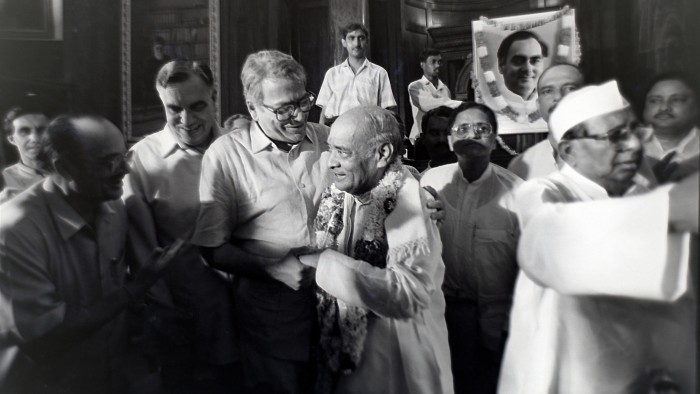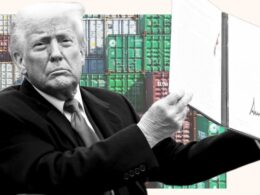Unlock the Editor’s Digest for free
Roula Khalaf, Editor of the FT, selects her favourite stories in this weekly newsletter.
India faced a wrenching balance of payments crisis in 1991 that forced the country to embark on “big bang” reforms that unlocked two decades of rapid growth. Is another external shock about to jolt India’s economy into action?
Some Indians see the parallels. With the spectre of a 26 per cent Donald Trump “reciprocal” tariff hanging over it, Narendra Modi’s government is moving quickly to negotiate a bilateral trade agreement with the US, covering everything from food to e-commerce and cars.
Back in 1991, lowering tariffs was a key component of the reforms pursued by PV Narasimha Rao, alongside opening the economy to investment and dismantling the web of bureaucracy that Indians called the “Licence Raj”.
More than three decades later, India’s economy is more open to the world, but some tariffs have crept back up. Foreign direct investment is at miserly levels relative to India’s size.
Red tape plagues businesses, local and foreign. Modi’s own associates have acknowledged the need for structural reforms, with chief economic adviser V Anantha Nageswaran declared in a recent report that the government needs to “get out of the way” of business.
Advocates of opening up hope lower tariffs and other benefits of a trade deal — including elimination of non-tariff barriers that gum up commerce — will bring a surge of investment and sorely needed new jobs for the world’s most populous country.
“It’s obvious now what we need to do: deregulate tariffs, and become a less closed economy,” says Surjit Bhalla, a former director at the IMF. “That’s the jump start that the Indian economy could get.”
An Indian official said last week that the two sides had finalised terms of reference on the US trade talks and was launching talks online now, with the aim of beginning in-person negotiations in May. India says it aims to conclude the trade agreement’s first tranche by September or October, if not sooner.
“There is a clear pathway which we have decided at the leaders’ level,” Sunil Barthwal, commerce secretary, said. India’s trade teams are “really charged up”, S Jaishankar, foreign minister, said last week.
The push from Trump has prompted Modi’s government to also fast-track trade talks with the EU and the UK, on which Indian, European and British officials all say they aim to reach agreement in principle this year.
However, veterans of the 1991 reforms say the comparison is imperfect. India has a more stable and faster growing economy now. The rose-hued analysis also underplays Trump’s fickleness and capacity for U-turns.
“This is not a 1991 moment,” says Montek Singh Ahluwalia, an architect of that year’s reforms, adding that India now faces a “messier situation” on the international front.
“However, both the EU and the US are likely to reduce their dependency on China,” he says. “This is a potential opportunity for India, but will require us to be more open than we are.”
With China’s more competitive producers priced out of the US market by a 145 per cent tariff, Indian exporters believe they could profit from a volatile trading environment in which India’s top geopolitical and commercial rival China is Trump’s main target.
It may in theory give a leg-up to industries such as apparel and textiles, gems and jewellery, and smartphones. Largely thanks to Apple, exports of smartphones rose from $4.7bn to more than $7bn in the year ending March 31, according to data released last week.
“A lot of US companies that wanted to expand in China will move out of China,” says Ajai Sahai, CEO of the Federation of Indian Export Organisations. “We have an opportunity to get them in India now.”
Notwithstanding the mood of optimism in Delhi, there are reasons to doubt India will emerge from Trump’s trade war relatively unscathed.
India has been a tough — some would say intransigent — negotiator in trade talks, including with the UK and Europe.
Piyush Goyal, India’s combative commerce minister, declared recently that New Delhi “won’t negotiate at gunpoint” — a clear reference to the US. Politically sensitive goods such as dairy, wheat, rice, and maize will be left off the table, according to people close to the talks.
With an unpredictable partner in Trump’s US, 2025 promises to be a turbulent year for India’s trade policy, whether or not it proves a transformative one.
Source link









